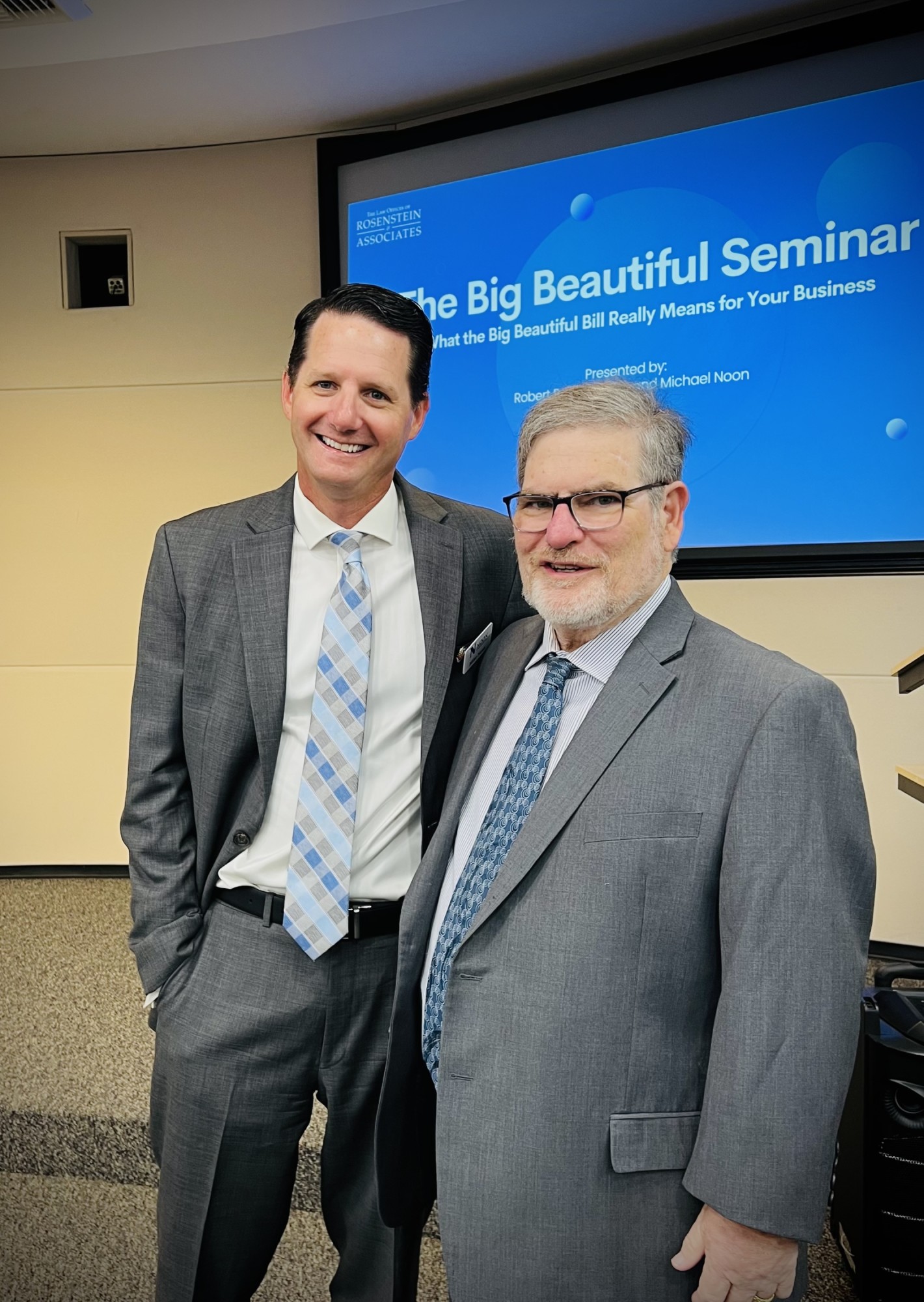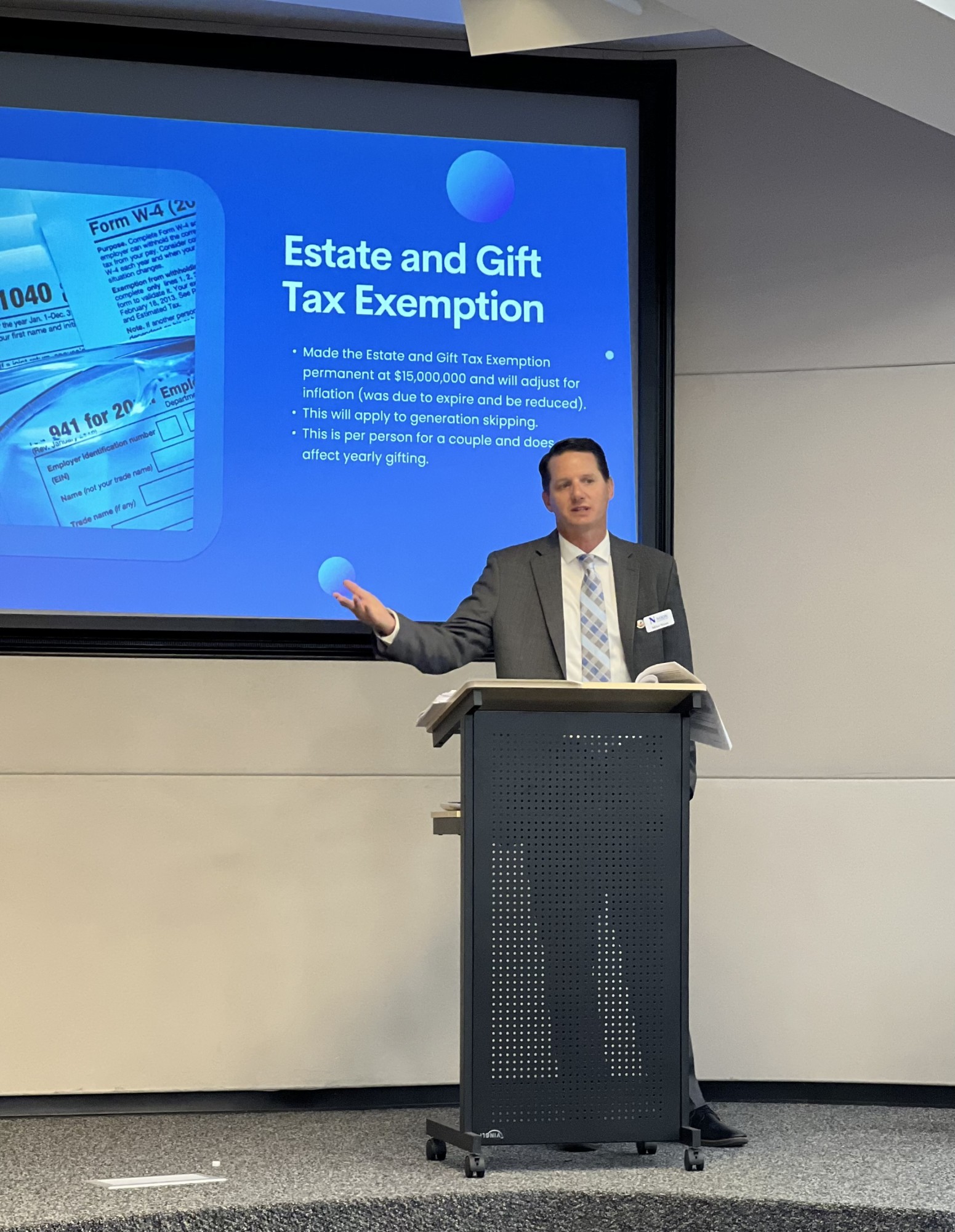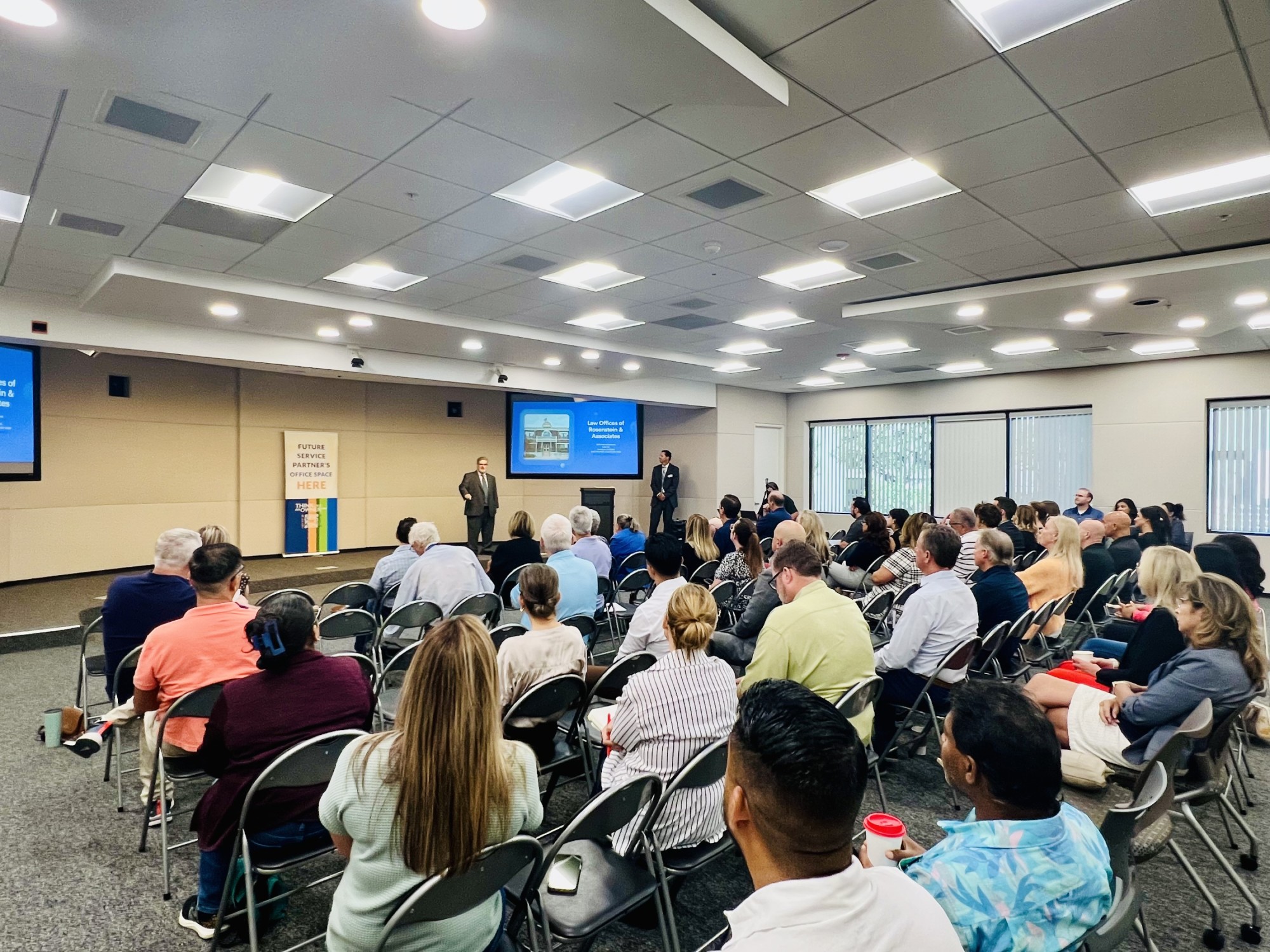
The Big 'Beautiful' Bill and Your Bottom Line: What HR1 Means for Business
Essential Tax Changes Every Business Owner Should Understand
On July 29, 2025, the Temecula Valley Chamber of Commerce hosted a critical educational seminar titled “The Big Beautiful Seminar: What the Bill Really Means for Your Business,” spotlighting the practical implications of the federal tax reform known as H.R.1, the “One Big Beautiful Bill Act.” Featured presenters included Robert B. Rosenstein, Founder and Managing Shareholder of Rosenstein & Associates, and Mike Noon, CPA, MSA, Partner at Noon & Associates CPAs, Inc.
Beautiful Seminar: What the Bill Really Means for Your Business,” spotlighting the practical implications of the federal tax reform known as H.R.1, the “One Big Beautiful Bill Act.” Featured presenters included Robert B. Rosenstein, Founder and Managing Shareholder of Rosenstein & Associates, and Mike Noon, CPA, MSA, Partner at Noon & Associates CPAs, Inc.
This event provided an in-depth, nonpartisan breakdown of the sweeping legislation’s effects on local businesses, employers, and individual taxpayers. With state and federal tax frameworks often diverging, especially in California, this timely session helped attendees understand how to navigate these new rules and plan ahead with confidence.
Why This Matters
Tax law changes impact nearly every aspect of business and personal finance, from pass-through entity deductions and overtime reporting to estate planning and vehicle purchases. Given the scale and complexity of the new law, business leaders must stay informed and collaborate closely with tax professionals to ensure compliance and maximize benefits.
Seminar Highlights: Planning Considerations for 2025 and Beyond
1. Qualified Business Income (QBI) Deduction Permanency
The 20% QBI deduction has been made permanent for qualifying small businesses. While a proposed increase to 23% was not adopted, more high-income service providers may now qualify. C-corporations remain excluded. Now is the time for business owners to review their entity structure and owner compensation.
2. Expanded SALT Deduction Cap & the PTE Election
The cap on State and Local Tax (SALT) deductions will increase to $40,000 beginning in 2025. Business owners structured as S-Corps or LLCs should evaluate whether electing the Pass-Through Entity (PTE) tax can further reduce their federal liability. This strategy may be especially impactful in high-tax states like California.
3. Estate Planning Under New Exemption Thresholds
The federal estate and gift tax exemption is now $15 million per individual ($30 million for married couples). This provides high-net-worth families a critical window to make strategic gifts or transfers. The stepped-up basis rule remains in effect, preserving key planning advantages for appreciated assets.
provides high-net-worth families a critical window to make strategic gifts or transfers. The stepped-up basis rule remains in effect, preserving key planning advantages for appreciated assets.
4. Planning Around the Alternative Minimum Tax (AMT)
With AMT returning in 2026, high-income taxpayers—particularly those anticipating capital gains or major liquidity events—should assess exposure now. Planning techniques may include installment sales, deferred income, or spreading gains across tax years to reduce AMT risk.
5. Understand Effective Dates for Deductions
Many new provisions are phased in over time:
- SALT cap increase: 2025
- Mortgage insurance premium deduction: 2026
- AMT changes: 2026
- Taxpayers and their advisors must map out key income and deduction events across calendar years to avoid missed opportunities.
6. Reporting and Documentation for Itemized Deductions
Several deductions (e.g., investment fees, moving expenses) have been permanently eliminated. However, certain professional expenses—such as out-of-pocket classroom costs for educators—have expanded. Meticulous documentation will be essential.
7. Student Loan Forgiveness
Debt forgiven due to death or permanent disability will not be taxed, providing clarity and relief for affected borrowers and families.
8. California vs. Federal Law
Because California still conforms to 2015 federal tax law, key differences remain. Always provide your preparer with complete financial data to assess opportunities under both systems.
Second Half Highlights: Employment, Payroll, and Compliance Changes
1. New Deduction Rules for Tips and Overtime (2025–2028)
A. Reporting Requirements
New deductions for tips and overtime will require changes in payroll reporting. While current W-2s report “allocated tips” in Box 8, the new law may require a revised box or supplemental documentation. Due to the short timeline, the IRS may not implement W-2 updates in time—placing emphasis on pay stubs as a primary verification tool.
tips” in Box 8, the new law may require a revised box or supplemental documentation. Due to the short timeline, the IRS may not implement W-2 updates in time—placing emphasis on pay stubs as a primary verification tool.
B. Definition of “Cash Tips”
The deduction applies to both cash and credit card tips, but excludes non-cash gratuities (e.g., gift cards, movie tickets). Employers must have systems in place to capture all eligible tip types accurately.
C. Payroll Taxes Still Apply
These deductions apply to income tax only. Employees must still pay Social Security and Medicare taxes on all tips and overtime income.
D. Income Limits and Eligible Workers
Deduction phases out at $150,000 (individual) or $300,000 (joint). Only workers who “ordinarily receive tips” (e.g., service staff) qualify. High-income professionals such as lawyers and CPAs are excluded.
E. Overtime Deduction Specifics
- Capped at $12,500 (individual) and $25,000 (joint)
- Only for non-exempt employees under the Fair Labor Standards Act (FLSA)
- Requires valid Social Security number
- Exempt salaried employees cannot claim
F. Schedule C Filers and Sole Proprietors
Self-employed individuals (e.g., hairdressers, dog groomers) may deduct tips only up to their net business income.
Example: $20,000 in tips with $15,000 net Schedule C income = maximum $15,000 deduction.
G. Prevailing Wage and California Complexities
In prevailing wage environments, the deduction applies if overtime is required by law. However, union contracts may limit eligibility. In California, distinctions between “daily overtime” and “40-hour week overtime” add reporting complications.
2. Payroll and W-2 Processing
A. Delays and Interim Measures
Due to uncertainties about W-2 updates, early tax filings may be delayed until mid-February. Employers are advised to update internal payroll systems and work with providers to ensure full compliance.
B. California-Specific Pay Issues
Overtime calculations in California include variable pay like commissions. How this will be handled federally is still unclear. For now, existing overtime reporting lines on pay stubs are expected to serve as primary documentation.
C. Awaiting Treasury Guidance
Additional rules and clarifications are expected from the U.S. Treasury in the months ahead. Employers should monitor IRS communications closely.
3. IRS Enforcement and Audit Trends
A. Likely Audit Triggers
Expanded tip and overtime reporting could increase audit risk. However, audit rates remain low, and most reviews are conducted through AI-driven “paper audits” that cross-check tax documents. Serious enforcement is reserved for significant discrepancies.
B. Compliance Reminder
All income must be reported, regardless of tax benefits or immigration status. Failure to report is more serious than the inability to pay. Historical amnesty programs have shown that voluntary compliance is crucial for future eligibility.
4. New Vehicle Interest Deduction (2025–2028)
A. Deduction Basics
Up to $10,000 in interest may be deducted for new vehicle purchases (not leases) during 2025–2028, provided the vehicle is assembled in the U.S. Deduction applies only to personal vehicles under 14,000 lbs.
B. Documentation Requirements
VIN and dealership information will be required. A new government website will verify vehicle eligibility, and dealerships may be required to issue a 1098-like interest statement.
C. Other Considerations
This appears to be an “above-the-line” deduction, not requiring itemization. Leasing is excluded. Taxpayers must fall under income phase-out thresholds to qualify.
Action Steps for Attendees and Employers
- Attendee Emails: If you attended but did not register, please contact the Chamber to receive the slide deck.
- Payroll Teams: Begin coordinating with providers now to capture eligible tips and overtime by the end of 2025.
- Tax Planning: High earners, business owners, and those with complex deductions should schedule planning sessions.
- Vehicle Purchases: Buyers should verify VIN eligibility before making purchases intended to qualify for the interest deduction.
- Schedule C Filers: Review your business income and tip collection practices to align with new deduction caps.
- Educators: Keep clear records of all out-of-pocket teaching expenses.
- State-Federal Compliance: Provide your preparer with all income and deduction items to assess eligibility under both federal and California rules.
Looking Ahead
As implementation begins, the Temecula Valley Chamber of Commerce remains committed to supporting its members through legislative updates, compliance guidance, and timely educational programming. We extend our sincere thanks to Mr. Rosenstein and Mr. Noon for their valuable insights and to all attendees for their active participation.
Resources:
- Presentation Slide Show
- H.R.1 One Big Beautiful Bill Act
- If you require a lawyer and/or a CPA, please visit the Business Directory.
| Disclaimer: This article is intended for informational purposes only and does not constitute legal, tax, or accounting advice. Individuals should consult their licensed tax professionals for personalized guidance. |
